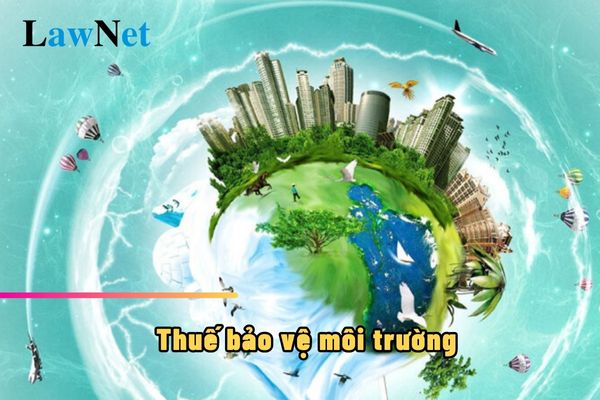Vietnam: Is environmental protection a direct or indirect tax?
Vietnam: Is environmental protection a direct or indirect tax?
Based on Clause 1, Article 2 of the Law on Environmental Protection Tax 2010, the definition of environmental protection tax is as follows:
Terminology Explanation
In this Law, the following terms are understood as follows:
1. Environmental protection tax is an indirect tax levied on products and goods (hereinafter collectively referred to as goods) that, when used, have an adverse impact on the environment.
2. Absolute tax rate is the tax rate determined by the amount of money calculated per taxable unit of goods.
3. Taxable plastic bags are bags and packaging made from single-layer polyethylene film, technically known as foam plastic bags.
4. Hydro-chloro-fluoro-carbon (HCFC) solution is a group of ozone-depleting substances used as refrigerants.
As such, according to the above regulation, it is clear that the environmental protection tax is an indirect tax.
Simultaneously, the environmental protection tax is levied on products and goods (hereinafter collectively referred to as goods) that, when used, have an adverse impact on the environment.

Vietnam: Is environmental protection a direct or indirect tax? (Image from the Internet)
What are bases for calculating environmental protection tax in Vietnam?
Based on the provisions of Article 5 of Circular 152/2011/TT-BTC as amended and supplemented by Article 1 of Circular 106/2018/TT-BTC, Article 3 of Circular 159/2012/TT-BTC, the bases for calculating environmental protection tax include the quantity of taxable goods and the absolute tax rate.
Specifically, the determination of tax calculation bases is as follows:
The bases for calculating environmental protection tax include the quantity of taxable goods and the absolute tax rate.
- The quantity of taxable goods is specified as follows:
+ For domestically produced goods, the quantity of taxable goods is the quantity of goods produced and sold, exchanged, internally consumed, given, promoted, or advertised.
+ For imported goods, the quantity of taxable goods is the quantity of goods imported.
For cases where the quantity of taxable goods exported, sold, and imported is measured in units different from the unit prescribed for tax calculation in the environmental protection tax schedule issued by the Standing Committee of the National Assembly, it must be converted to the prescribed measurement unit in the environmental protection tax schedule for tax calculation.
+ For mixed fuels containing petrol, oil, lubricant from fossil origin, and biofuels, the taxable quantity in the period is the petrol, oil, lubricant from fossil origin contained in the quantity of mixed fuels imported or produced, sold, exchanged, given, or internally consumed, converted to the tax calculation unit of the corresponding goods. The determination is as follows:
The taxable quantity of petrol, oil, lubricant from fossil origin = Quantity of mixed fuels imported, produced, sold, consumed, exchanged, given x Percentage of petrol, oil, lubricant from fossil origin in the mixed fuel
Based on the technical standards for mixed fuel processing approved by the competent authority (including cases of changing the percentage of petrol, oil, lubricant from fossil origin in the mixed fuel), taxpayers self-calculate, declare, and pay environmental protection tax on the fossil-origin petrol, oil, lubricant; simultaneously, they are obligated to inform the tax authority of the percentage of fossil-origin petrol, oil, lubricant contained in the mixed fuel and submit it with the tax return of the month following the month when the mixed fuel is first sold (or when the percentage is changed).
+ For multilayer plastic bags produced or processed from single-layer plastic films such as HDPE, LDPE, LLDPE, and other plastic films (PP, PA,...) or other materials such as aluminum, paper..., environmental protection tax is determined based on the percentage of single-layer HDPE, LDPE, LLDPE plastic film weight in the multilayer plastic bag. Based on the consumption rate of single-layer HDPE, LDPE, LLDPE film used to produce or process multilayer plastic bags, manufacturers or importers of multilayer plastic bags self-declare and are responsible for their own declarations.
Example 8: Company A produces or imports 100 kg of multilayer plastic bags, of which the weight of single-layer HDPE, LDPE, LLDPE film in the multilayer plastic bags is 70%, and the weight of other plastic films (PA, PP,...) is 30%.
Thus, the environmental protection tax that Company A must pay for 100 kg of multilayer plastic bags is: 100 kg x 70% x 40,000 VND/kg = 2,800,000 VND.
- The absolute tax rate as bases for calculating environmental protection tax for each type of good subject to environmental protection tax is the tax rate specified in the Environmental Protection Tax Schedule issued with Resolution No. 579/2018/UBTVQH14 dated September 26, 2018 of the Standing Committee of the National Assembly on the Environmental Protection Tax Schedule.
Are taxpayers of environmental protection tax entitled to tax refunds for goods used to introduce products in Vietnam?
Based on Clause 1, Article 11 of the Law on Environmental Protection Tax 2010 regarding tax refunds as follows:
Tax Refund
Taxpayers of environmental protection tax are entitled to tax refunds in the following cases:
1. Imported goods stored in warehouses at the border gate under the supervision of the Customs authority and re-exported to foreign countries;
2. Imported goods sold to foreign countries through agents in Vietnam; petrol, oil sold to foreign vehicles on routes through Vietnamese ports, or Vietnamese vehicles on international transport routes as prescribed by law;
3. Temporarily imported goods for re-export according to the temporary import for re-export business method.
4. Imported goods that the importer re-exports to foreign countries;
5. Temporarily imported goods introduced at fairs, exhibitions, and product introductions as prescribed by law when re-exported to foreign countries.
As such, based on the above regulation, taxpayers of environmental protection tax will be entitled to tax refunds for goods used to introduce products as prescribed by law when re-exported to foreign countries.

